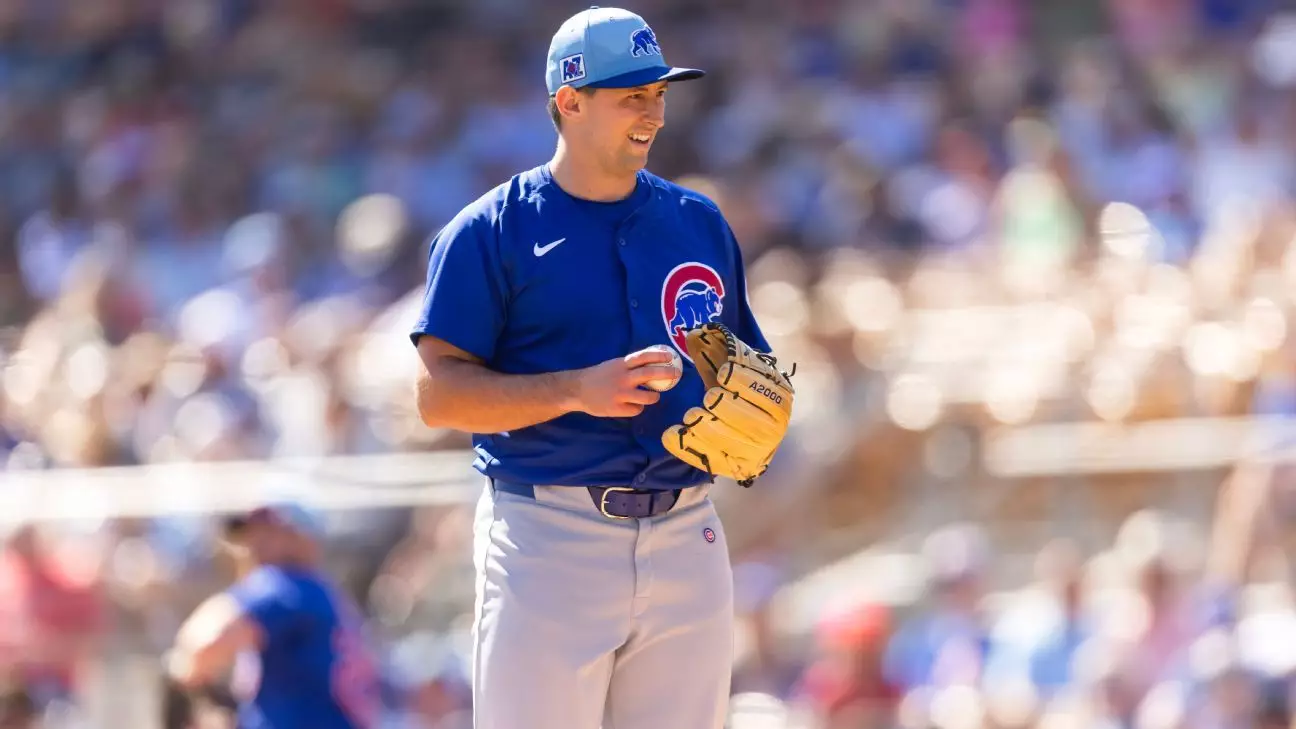In a groundbreaking move towards technological integration in Major League Baseball (MLB), the new challenge system for ball and strike calls debuted during the recent spring training match between the Chicago Cubs and Los Angeles Dodgers. This innovation, which allows players to contest umpire decisions, aims to enhance the accuracy of calls made on the field. Cody Poteet, a pitcher recently acquired by the Cubs, became the first player to utilize this challenge during that game, signaling a potential shift in how baseball operates.
The game commenced with plenty of excitement, but it was Poteet’s bold challenge of a fastball call during the first inning that captured the spotlight. After receiving a ball call from umpire Tony Randazzo on a pitch aimed at Dodgers infielder Max Muncy, Poteet tapped his head—a gesture indicating a desire for a review—revolutionizing the traditional framework of the game. The technology employed quickly displayed the pitch’s trajectory, revealing that the initial call had indeed been erroneous; thus Muncy’s count shifted dramatically from 1-1 to 0-2 before he ultimately struck out.
Muncy, reflecting on this unique experience, embraced the moment with humor. “I knew it was going to get overturned,” he stated, acknowledging that he was about to become part of baseball history. This response encapsulated the influential nature of the challenge system designed to empower players with more agency within the game.
The challenge system being tested this spring aims to strike a balance between human oversight and technological accuracy. Unlike the fully automated ball-and-strike systems tested in the minor leagues, the MLB version permits only three key players—the pitcher, catcher, and hitter—to initiate challenges. Notably, players must act independently of coaches or team support, further emphasizing the personal responsibility at play.
Poteet, who spent time honing his skills in the minor leagues last season, had firsthand exposure to this innovative system. His decision to challenge the call illuminated his confidence in its integration, highlighting a shift in the dynamic between players and umpiring decisions. Achieving a successful challenge, he noted, not only validated his instinct but also spared him the embarrassment of being the first player to mistakenly contest a call.
While initial testing has provided intriguing insight into the effectiveness of the challenge system, it raises questions about its feasibility in the regular MLB season. The league has expressed a cautious approach, opting to evaluate player feedback and results throughout spring training before making a long-term decision. Currently, only select stadiums in Arizona and Florida will feature this technology, with plans for clinical analysis post-spring games.
Questions linger regarding player perceptions of whether the challenge system will lead to more accuracy during pivotal moments in a game. As Muncy conveyed, “the idea is very interesting”, but emphasized the necessity for certainty before players invoke a challenge. This nuance suggests a tension between emotional instinct—often a part of professional sports—and the analytical precision that technology aims to introduce.
As the Cubs triumphed over the Dodgers 12-4, the spotlight rests firmly on the implications of the new challenge system. While the spring training results saw mixed outcomes—a parity of one call upheld and one overturned—they suggest a promising path toward enhancing the integrity of game officiating. The ongoing trials will undoubtedly influence MLB’s decision-making as it contemplates the future of this technology. With the prospect of incorporating such a system into regular-season play as early as 2026, players, officials, and fans alike must remain observant of this evolving landscape. The challenge system is more than just a technological advancement; it represents a significant cultural shift in Major League Baseball, one that could redefine the dynamics of the game for years to come.


Leave a Reply